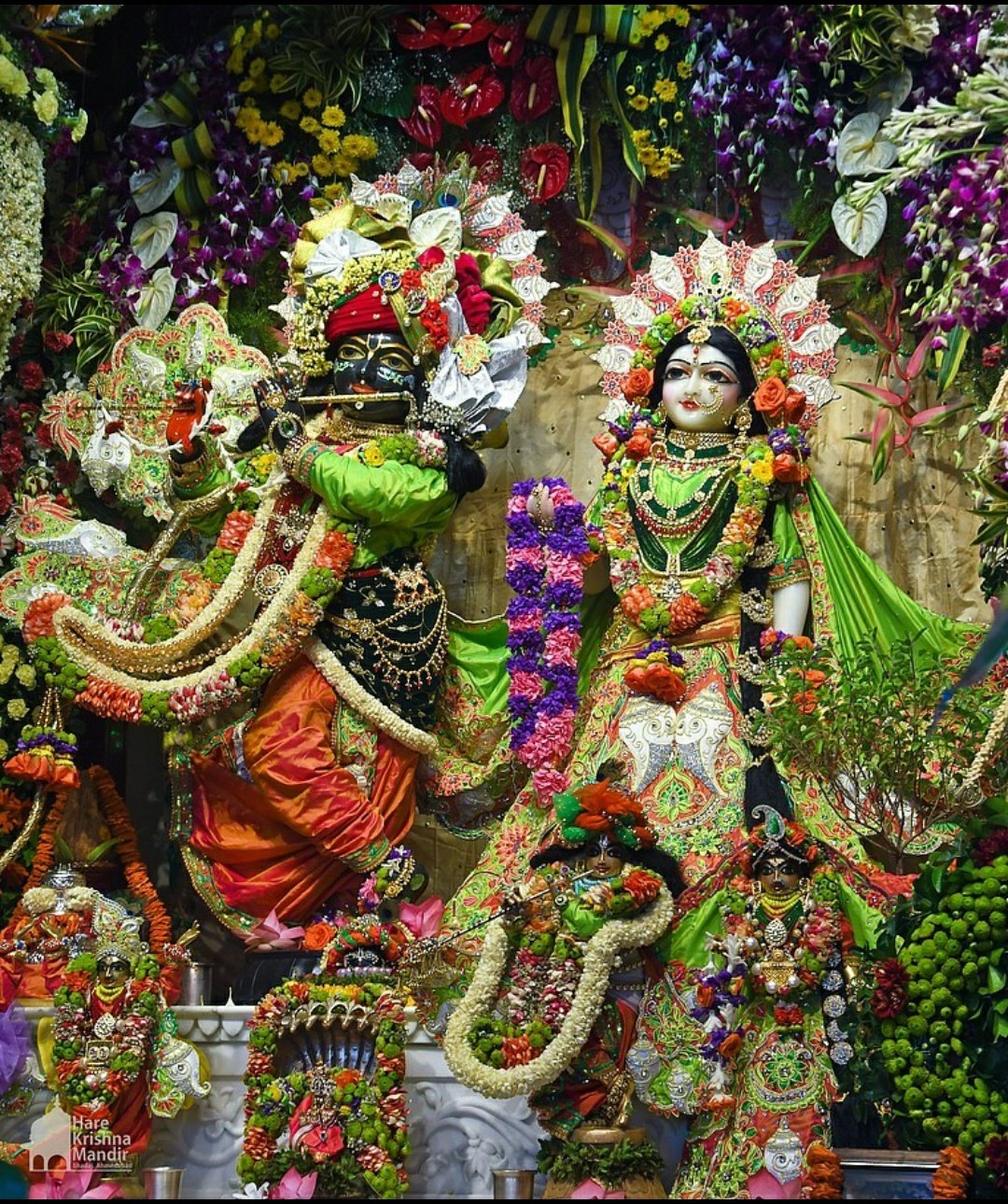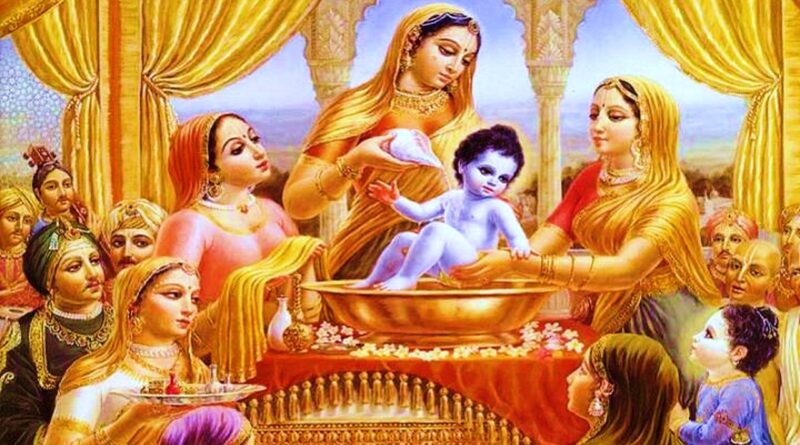KRISHNA JANMASHTAMI – THE CELEBRATIONS OF KRISHNA BIRTH
Krishna Kanhaiya Janmashtami is an annual Hindu festival that celebrates the birth of Krishna, the eighth avatar of Vishnu. It is observed according to the Hindu lunisolar calendar, on the eighth day of the Krishna Paksha in Shraavana or Bhadrapad, which overlaps with August or September of the Gregorian calendar.
The celebrations are being done on family level and most of them either celebrating with a Krishna idol in cradle or dressing their little kids as young Krishna.
Overall ambiance has uplifted due to the celebrations and it is going to increase with more festivals in line.
Krishna is considered to be the avatar of Vishnu, one of the Trinity – other two being Shiv and Brahma.
Contents
The Purpose of God Krishna Birth
Krishna’s avatar was responsible for curbing the evil spread by Kansh who happens to be his maternal uncle. The birth story of Krishna involves lot of hurdles which his parents being put in prison and how he escapes it in a magical way. The Leela of Krishna starts from early childhood and continues until he plays a crucial role in the Kuruskshetra war between Pandavs and Kauravs.
Krishna has provided baseline lessons regarding every phase of life and also preached about the right way to live :
- He has shown by example of his life.
- He overcame his situations and became the master of it.
- He faced innate difficulties yet always showcased positivity.
- He was a guide in true sense.
- He was a warrior in his own life.
- He was a musician – playing beautiful music on flute.
- He was a king. He was a ruler of Dwarka. He was a good friend to Sudhama.
- He was a charmer in love and relationships.
The Bhagavad Gita
He has so many names based on his Leelas and roles he has taken in his life. And he has left behind a blueprint for living social life. He has given his teachings in the form of Geeta – The Bhagavad Geeta – one of the finest lessons of life. It is said that all answers lie within it. One who seeks will find it.
Krishna belief has transformed India in ways that has never happened. Places like Mathura, Vrindavan and Dwarka are associated with Krishna. These places are considered to be Religious spots and are revoured deeply by the people of India.
Dwarka is considered to be one of the “Char Dham” – places of prime religious importance. The Char Dham are located in different directions of India forming a logical geographical boundary. Badrinath in the North, Jagannath Puri in the East, Rameshwaram in the South and Dwarka in the West.

The disciples of Krishna are huge and follow various interdisciplinary ideologies based in location and the era they belong to. Similar one modern belief group of Krishna – ISKCON is internationally famous and followed across countries around the world. The people who seek peace and harmony, find the answers and way through the consciousness.
The beauty of the Life of Krishna has lessons which are timeless, priceless and very much relevant in modern times. We can seek and find ways to uplift our social, personal and professional lives.
May you find the path you seek – by consciousness.
Krishna Janmashtami is a major Hindu festival that celebrates the birth of Lord Krishna, the eighth incarnation of Lord Vishnu. This festival, also known as Gokulashtami, is observed with great devotion and enthusiasm, particularly in India and other parts of the world where Hindu communities are present.
Key Aspects of Krishna Janmashtami Celebrations:
-
Date and Time:
-
Krishna Janmashtami falls on the 8th day (Ashtami) of the dark fortnight of the month of Bhadrapada (usually in August or September).
-
It is celebrated at midnight, marking the exact time of Lord Krishna’s birth, according to Hindu mythology.
-
-
Legends and Significance:
-
Krishna was born to Yashoda and Vasudeva in the prison of King Kamsa. According to myth, Lord Vishnu incarnated as Krishna to destroy the tyrant Kamsa and restore dharma.
-
Krishna is revered for his divine wisdom, playful spirit, and heroic acts, including his role in the Mahabharata and his teachings in the Bhagavad Gita.
-
-
Preparations and Rituals:
-
Fasting and Devotion: Devotees often fast for the entire day or observe partial fasting until midnight, the time when Krishna is believed to have been born.
-
Temple Celebrations: Temples dedicated to Lord Krishna, such as the famous ISKCON temples, are decorated with flowers, lights, and colorful rangolis. Special prayers and kirtans (devotional songs) are sung to invoke Lord Krishna’s blessings.
-
Recitations: Devotees may read or listen to the Bhagavad Gita or the Srimad Bhagavatam, scriptures that narrate the stories of Krishna’s life.
-
-
Dahi Handi Festival:
-
In parts of Maharashtra, the festival is celebrated with the Dahi Handi tradition, where groups of people form human pyramids to break a clay pot filled with curd (dahi), symbolizing Krishna’s love for butter and his childhood pranks.
-
This event is marked with a lot of enthusiasm, and it showcases teamwork, agility, and strength.
-
-
Decorating Temples and Homes:
-
Homes and temples are decorated with lights, flowers, and colorful drapes to create a festive atmosphere. An idol or picture of baby Krishna is placed in a cradle, often with butter and milk, symbolizing his childhood.
-
The cradle is swung back and forth to mimic the way Yashoda, Krishna’s mother, used to cradle him.
-
-
Midnight Celebrations:
-
At midnight, devotees gather to sing hymns, chant prayers, and celebrate the birth of Lord Krishna with joyful spirits. The aarti (prayer) is offered to the deity, and sweets such as makhan mishri (a mixture of butter and sugar) are distributed, representing Krishna’s love for butter.
-
-
Cultural Events:
-
Many communities organize cultural programs such as dance, drama, and music to depict the life and teachings of Krishna. These performances include plays based on Krishna’s life, his childhood stories, and the Mahabharata.
-
Raaslila dances, which depict Krishna’s divine interactions with the gopis (milkmaids), are popular in regions like Vrindavan and Mathura.
-
-
Food Offerings:
-
Devotees prepare various delicacies to offer to Lord Krishna, such as makhan (butter), peda, kheer, and other sweets. Butter, in particular, is significant as it symbolizes Krishna’s love for butter in his childhood.
-
-
Social and Community Spirit:
-
Krishna Janmashtami fosters a sense of community as families and neighbors come together to celebrate. The festival promotes unity, joy, and a deep connection to spiritual values.
-
Conclusion:
Krishna Janmashtami is a vibrant and joyous festival that celebrates not just the birth of Lord Krishna but also his teachings and divine actions. It’s a time for devotees to deepen their spiritual connection through prayers, rituals, music, dance, and community activities, making it a cherished celebration for millions of people across the world.

